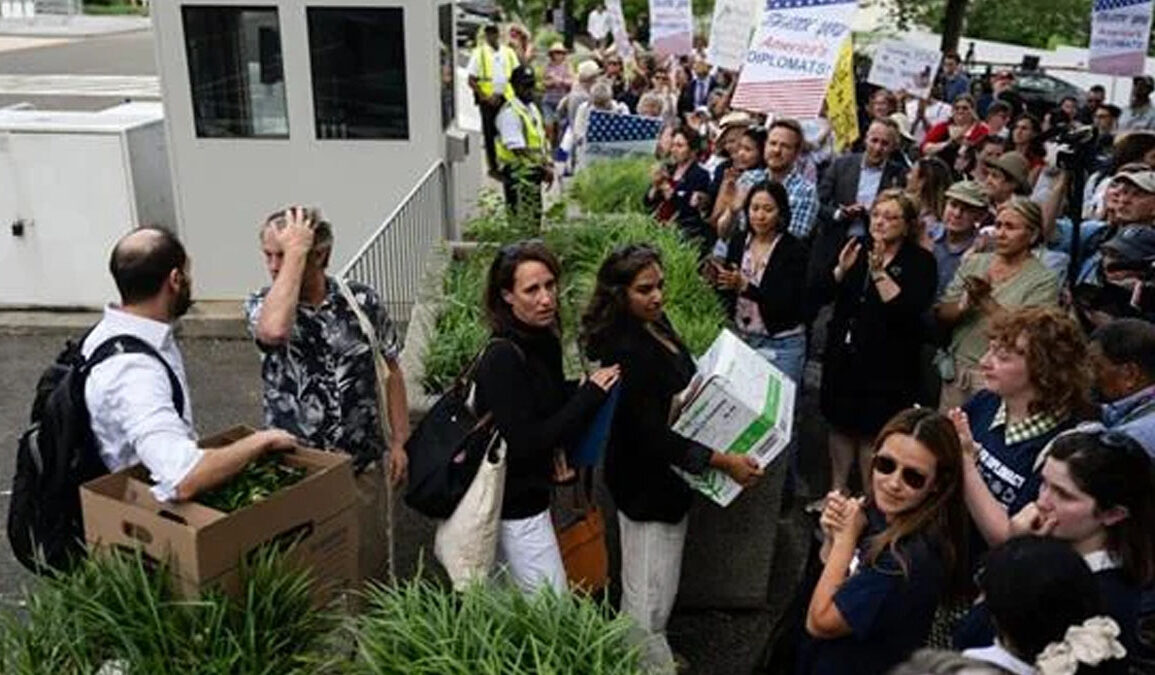About 100,000 federal workers officially came off the payroll this week, capping the first wave of President Trump’s deferred-resignation plan. The Office of Personnel Management says roughly 154,000 employees accepted the offer, with two thirds paid through September 30, the end of the fiscal year. The administration expects the federal workforce to end the year with hundreds of thousands fewer employees, driven by a hiring freeze, layoffs, and voluntary exits. One analysis projects the decline could reach about 300,000 workers by year’s end, the largest annual reduction since World War II.
Supporters cast the program as overdue discipline for a system they view as bloated and unaccountable. OPM spokesperson McLaurine Pinover said the program “delivered incredible relief to the American taxpayer,” adding that no previous administration had “been even close to saving American taxpayers this amount of money in such a short amount of time.” OPM Director Scott Kupor framed the moment as cultural renewal, saying the team “did as much as they could to be appropriately generous and give people as long of a runway as they could to go transition into something new,” and that the goal is a government where people are always thinking about how to do things “differently and better.”
How the buyouts took hold
The buyout began just eight days after the inauguration, when about two million federal employees received an email inviting them to resign while keeping pay and benefits through September. The message, titled “a fork in the road,” was modeled on a letter Elon Musk sent when restructuring Twitter. Agencies later reopened the offer in March and April as doubts about legality eased, and uptake accelerated.
The program unfolded alongside visible turbulence. Offices closed or faced lease cancellations. Early retirement and voluntary departure programs multiplied. Probationary workers were purged in large numbers. Entire functions in some agencies were halted. A new Department of Government Efficiency, led by Musk, set ambitions to eliminate waste that were later revised from two trillion dollars to 150 billion. USAID saw sweeping layoffs following a foreign aid freeze. Workers in DEI roles were put on leave to be separated later. The Treasury Department also faced targeting. The Partnership for Public Service estimated that the restructuring could itself cost taxpayers about 135 billion dollars to fire, rehire, and carry employees on leave.
The labor market backdrop
The timing worsened an already soft job market. Sectors from manufacturing to finance were shedding jobs. Oxford Economics’ Ryan Sweet said the federal cuts are “one of the reasons why the job market in the last few months has weakened.” He warned that furloughed federal workers could appear as unemployed in data that feed the national unemployment rate and said “a hideous employment report could be coming” if shutdown layoffs add to buyout departures.
Competition is fierce, especially in Washington and Maryland. Indeed reported a 41.2 percent rise in federal worker applications between January and September. Many workers in high demand landed on their feet, but others are facing a crowded market and slow hiring cycles.
Stories behind the statistics
For some, the offer felt like a lifeline from a tense workplace. Cynthia Iglesias Guven, who joined the Agriculture Department in 1998 and later rose to a senior role in Washington, said, “Going into work every day was extremely tense.” When she saw the April offer, she accepted.
Others acted out of fear. Rick Beevers, a 48-year-old with the U.S. Army’s program executive office for aviation, was reclassified as a probationary worker after a promotion, placing him among the first targeted for layoffs. “It just wasn’t worth it,” he said. “There was a much better opportunity to find something else that wasn’t government.” He tried to move into a major defense manufacturer and, after several interviews, pivoted to smaller contractors. He has since landed a job and expects to start now that he is off the government payroll.
Some regret their choice. A Transportation Department data analyst in the Midwest accepted the second-round offer after his office lease was canceled and a possible relocation loomed. Later, the lease was restored and the move never came. He said he felt forced into “an impossible decision” by threats that did not materialize and found his new private-sector role less fulfilling despite similar pay.
Others describe a mix of relief and worry. Stephani Cherkaoui, who trained inspectors at the Food Safety and Inspection Service, said, “It’s goodness that’s coming from a very terribly depressing place. I’m able to just breathe.” She added that for the public, “they got robbed,” reflecting a belief that paying people not to work was unfair to taxpayers. After months of applications and few interviews, she launched a consulting business, enrolled in a doctoral program, and is considering a return to public service someday.
Services disrupted and morale shaken
Across the government, work has been impeded and services reduced. Food safety training teams have been disbanded or scattered. Infrastructure analysts have left with specialized knowledge. Research coordination has slowed. The personal strain is visible in therapy offices and career-coaching practices. Guven began coaching fellow federal workers and was asked by local therapists to help explain why their clients were “in such despair.” She worries that shutdown logistics and staffing shortages could even delay pensions. To hedge, she “took a bartending class and signed up to potentially walk dogs on Rover.”
Shutdowns have longer shadows. Research from the University of Virginia, Emory, and Stanford found that furloughed workers are 31 percent more likely to leave in the following year. Christoph Herpfer of UVA’s Darden School of Business said shutdown turmoil “makes them feel like a pawn in a political game,” and that not getting paid compounds the instability.
The firing question during a shutdown
The administration has threatened to permanently lay off additional workers in connection with a shutdown that could furlough an estimated 750,000 people. Supporters see hard choices as necessary to discipline a sprawling bureaucracy. Critics call the threat both illegal and reckless.
Representative James R. Walkinshaw argues that OMB Director Russ Vought’s memo urging agencies to consider reductions in force during a shutdown is “political intimidation, not valid administrative guidance.” He says the Antideficiency Act prohibits agencies from creating new obligations when funding lapses and that layering a complex RIF process on top of a shutdown would invite legal violations. Former officials add that RIFs are slow, heavily regulated, and highly contestable. Rob Shriver, who once led the Office of Personnel Management in an acting capacity, said agencies should “focus on the work needed to manage a shutdown without putting them through a pointless RIF exercise.”
Supporters say the pain is worth it
Backers of the overhaul argue the buyouts were generous and humane. Pinover said the deferred resignation program was “legal” and provided “over 150,000 civil servants a dignified and generous departure.” Kupor said the aim is a workforce that is leaner and more accountable. Proponents also point to projected savings of about 28 billion dollars annually, even as a Senate analysis in July put near-term costs at 14.8 billion dollars to pay wages and benefits during months of administrative leave.
These supporters see the chaos as a tool. They believe entrenched systems rarely reform themselves without shock. They argue that a smaller federal footprint will force prioritization, push innovation, and reduce programs that drifted from core missions.
Opponents warn of legal risks and real harm
Opponents see a dangerous precedent. They cite sudden purges at security agencies that were rescinded after public backlash, whipsaw decisions that create legal liability, and the risk of politicizing neutral functions. NPR’s reporting described workers repeating their oath to “support and defend the Constitution” as they protested near the Capitol, saying they serve the American people, not a single president. Jenna Norton, furloughed from the National Institutes of Health, said the consequences people fear in a shutdown are “already happening,” including shuttered programs and damaged research.
To these critics, the verdict is simple. The government cannot fire its way through a funding gap. The law sets limits. The risks to essential services are real. The chaos is not cleansing. It is costly.
The federal system does need trimming. A government that tries to do everything often does nothing well. Streamlining is overdue. The challenge is to keep essential services intact while forcing a long-resistant bureaucracy to change.
That requires accepting some disorder and being honest about tradeoffs. It means prioritizing mission-critical work and protecting safety functions even as redundant layers are peeled away. It means resisting the urge to use shutdowns as a shortcut to firings and instead using thoughtful plans that survive legal scrutiny.
Chaos is not pleasant, but in this case it may be useful. The next year will reveal whether Washington converts disruption into discipline. If it does, taxpayers will see leaner agencies, clearer missions, and better service. If it does not, the nation will have paid the high cost of upheaval without the benefit of reform.








